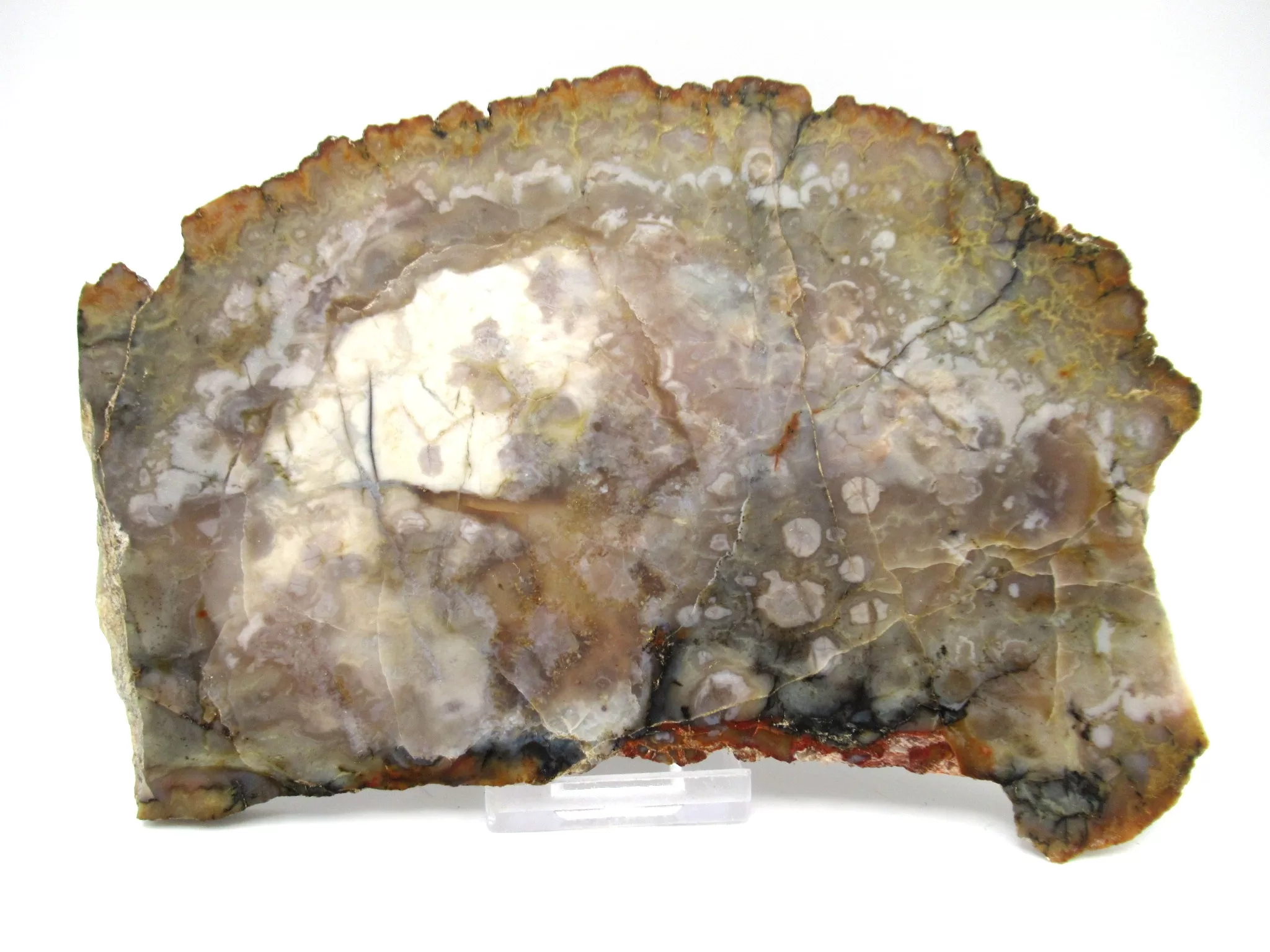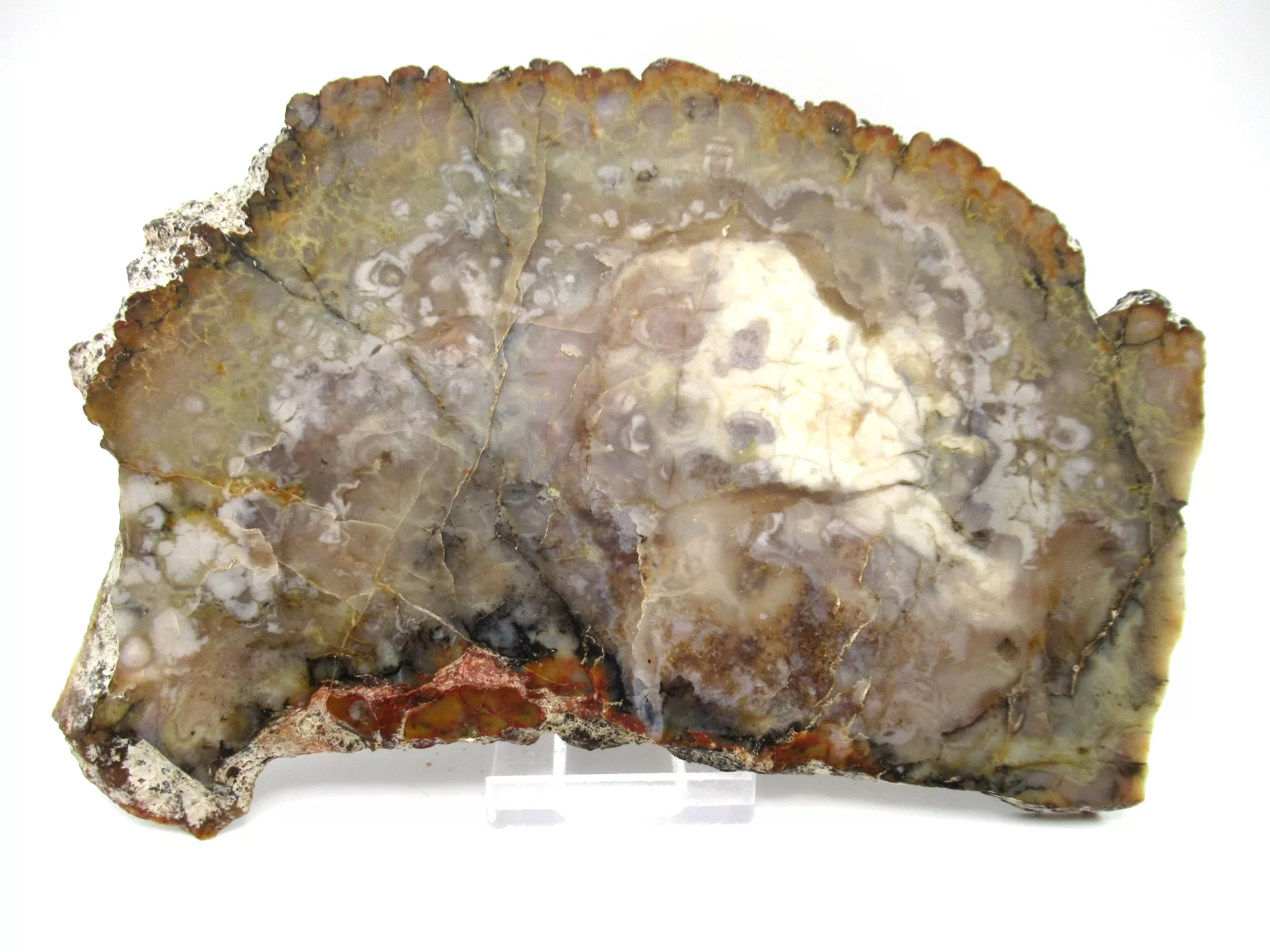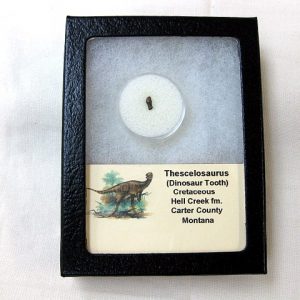Description
Jurassic Dinosaur Coprolite
- Jurassic Dinosaur Coprolite (Slice)
- Jurassic Age
- Morrison Formation
- Utah
- Specimen measures approx. 6.7″ inches wide x approx .25″ thick
- More Fossil Coprolite for Sale
WHERE DID THIS COPROLITE COME FROM?
This specimen most likely came from an unidentified Sauropod dinosaur. There have never been any bone fragments found in any of these specimens, indicating each one came from a meat-eater, so the presumption has been that these coprolites were plant-based in nature and came from herbivores.
WHAT IS A COPROLITE?
A coprolite is fossilized feces. Poop are classified as trace fossils as opposed to body fossils, as they give evidence for the animal’s behavior (in this case, diet) rather than morphology. The name is derived from the Greek words κόπρος (kopros, meaning “dung”) and λίθος (lithos, meaning “stone”). They were first described by William Buckland in 1829. Prior to this they were known as “fossil fir cones” and “bezoar stones”. Coprolites serve a valuable purpose in paleontology because they provide direct evidence of the predation and diet of extinct organisms.
WHY ARE COPROLITES IMPORTANT?
Fossilized feces that can give evidence for the animal’s behavior (in this case, diet) rather than morphology. By examining coprolites, paleontologists are able to find information about the diet of the animal (if bones or other food remains are present), such as whether it was a herbivorous or carnivorous, and the taphonomy of the coprolites, although the producer is rarely identified unambiguously, especially with more ancient examples. So coprolites can tell us a lot about an animal’s diet!
Like other fossils, have had much of their original composition replaced by mineral deposits such as silicates and calcium carbonates.
Recognition of coprolites is aided by their structural patterns, such as spiral or annular markings, content, undigested food fragments, and associated fossil remains. Smallest coprolites are often difficult to distinguish from inorganic pellets or from eggs. Most coprolites are composed chiefly of calcium phosphate, along with minor quantities of organic matter. By analyzing coprolites, it is possible to infer the diet of the animal which produced them.





